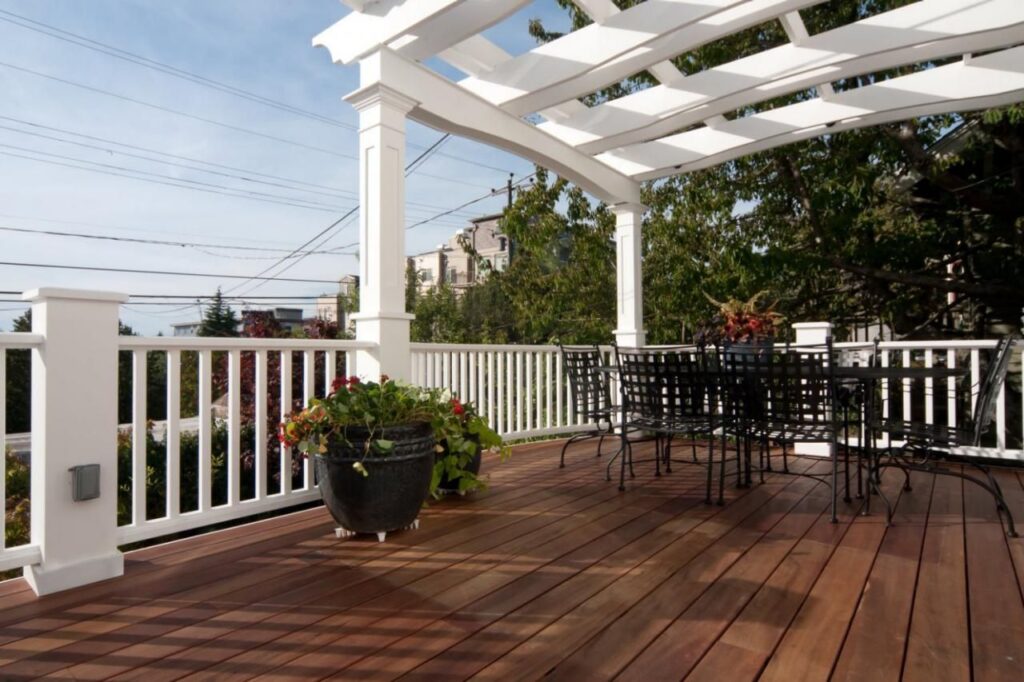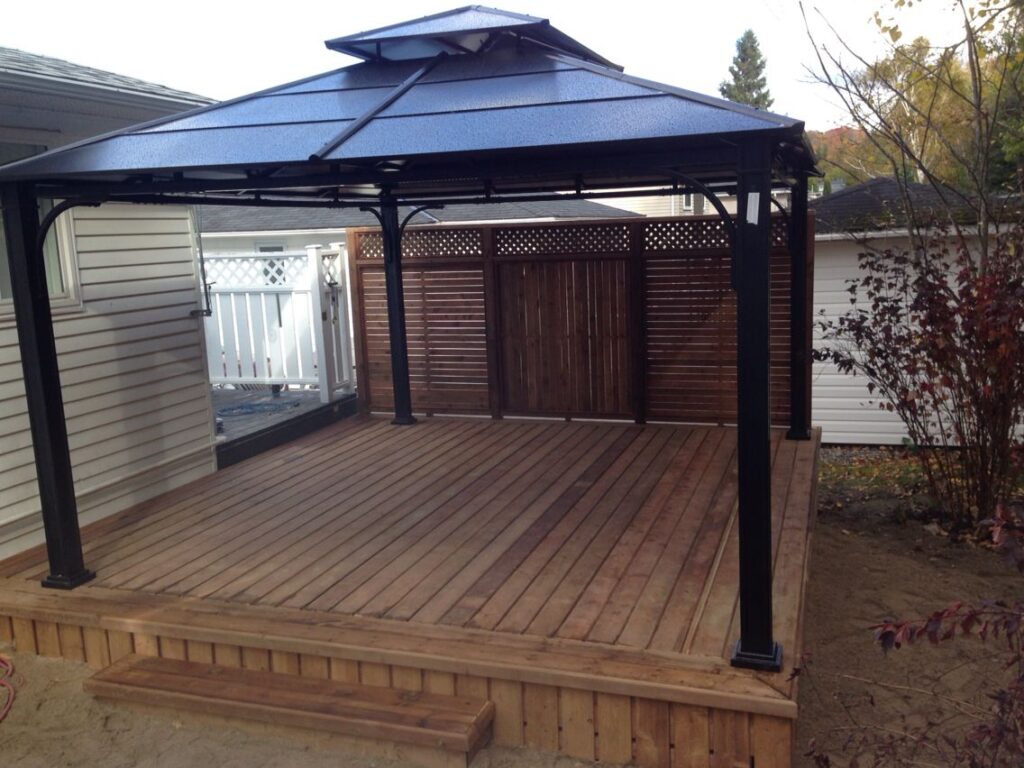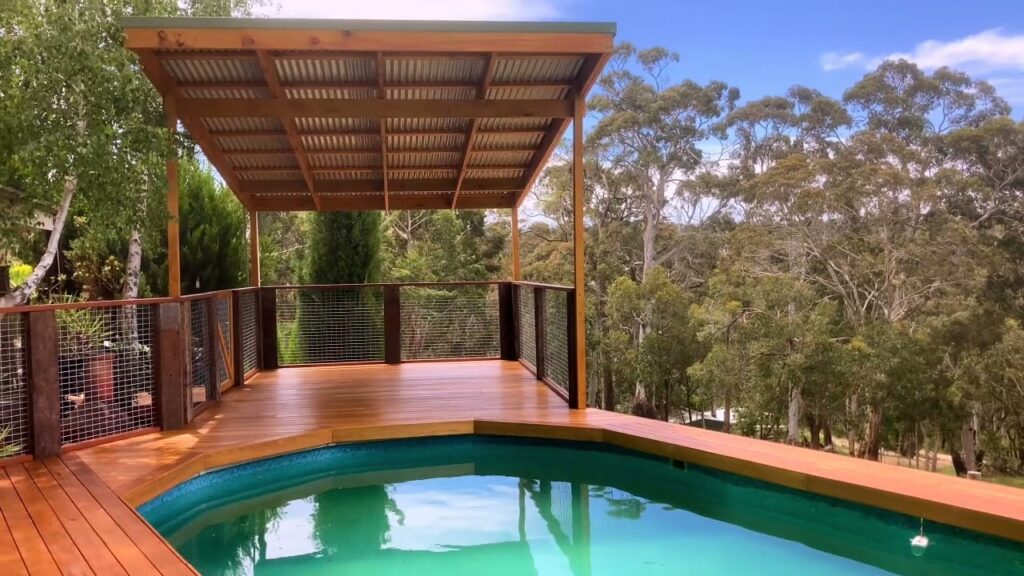Wooden decks and pergolas are popular and versatile elements in landscaping, adding both aesthetic appeal and functional outdoor living spaces to a property.
Wooden Decks:
A wooden deck is an elevated platform typically constructed from wood, often attached to the back of a house or as a standalone structure. It provides a comfortable space for outdoor activities, such as lounging, dining, and entertaining. Here are some key points to consider:
Material Selection: Choose a durable and weather-resistant wood species for your deck. Common choices include cedar, redwood, pressure-treated lumber, and tropical hardwoods like ipe.
Design: The design of the deck should complement the architectural style of your home and the overall landscaping theme. Consider factors such as deck shape, levels, railings, and steps.
Functionality: Determine how you plan to use the deck. This will influence the size, layout, and any additional features you might want, such as built-in seating, planters, or a hot tub area.
Maintenance: Regular maintenance is essential to keep a wooden deck looking its best. This includes sealing or staining the wood, periodic cleaning, and addressing any repairs as needed.
Safety: Ensure the deck is structurally sound, and if it’s elevated, comply with local building codes regarding railing height and other safety measures.


Pergolas:
A pergola is an outdoor structure consisting of vertical posts or pillars that support crossbeams and an open lattice or slatted roof. It provides partial shade, architectural interest, and a framework for climbing plants. Here’s what you should consider when adding a pergola to your landscape:
Design: Pergolas come in various designs, from simple and minimalist to intricate and ornate. Choose a design that complements your landscaping style and enhances the overall aesthetics.
Materials: Pergolas can be made from wood, vinyl, metal, or a combination of materials. Wooden pergolas are a popular choice, but ensure the wood is treated for outdoor use.
Shade: Pergolas offer partial shade, making them ideal for creating a comfortable outdoor space without completely blocking sunlight. Consider the spacing of the slats or lattice to achieve the desired level of shade.
Climbing Plants: Many homeowners choose to grow climbing plants, such as vines or roses, on their pergolas. The plants can provide additional shade and create a more inviting and natural atmosphere.
Location: Decide where the pergola will be placed in your landscape. Common locations include over a deck, patio, outdoor kitchen, or as a standalone feature in the garden.
Lighting: Consider incorporating lighting into your pergola design. This could be string lights, pendant lights, or even solar-powered options to extend the usability of the space into the evening.
Both wooden decks and pergolas can significantly enhance your outdoor space, creating a more enjoyable and inviting environment for relaxation and entertainment. When integrating these elements into your landscaping, be sure to consider your overall design goals, the practical uses of the spaces, and the materials that will best suit your climate and maintenance preferences.
